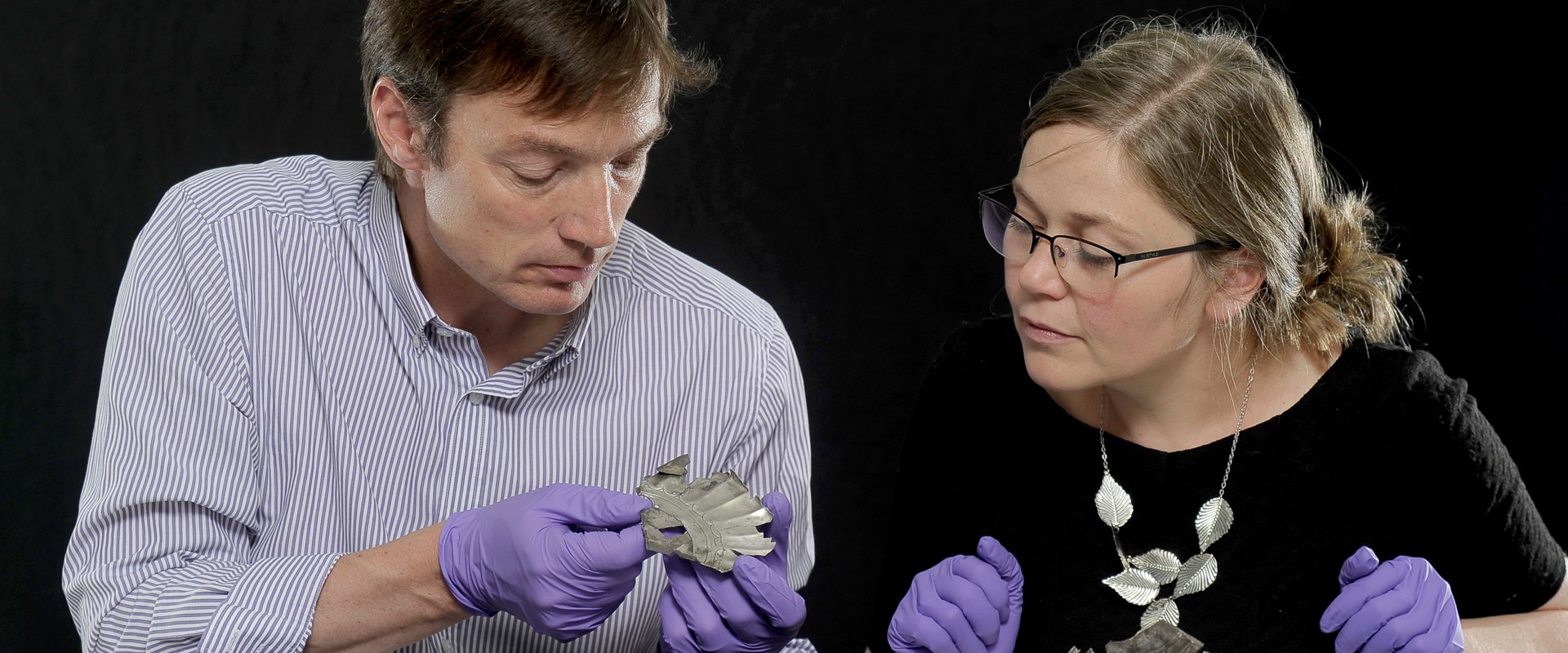A hoard of Roman silver from Dairsie in Fife, which was found by metal detectorist David Hall in 2014, when he was just 14 years old will go on show for the first time in a new exhibition at the National Museum of Scotland this October.
David, from Livingston, has since visited researchers at the Museum to help catalogue the fragments of the Dairsie Hoard and learn about the insights they have yielded to museum experts. The Dairsie hoard dates to the late 3rd century AD and is the earliest ‘hacksilver’ from anywhere beyond the frontiers of the Roman Empire.
Hacksilver refers to objects literally hacked into pieces, converted from beautiful treasures into raw silver bullion. Archaeologists think this silver came to Fife as a gift or payment from the Roman world. The Romans could not just rely on the strength of their army – they also used diplomatic efforts to secure the empire’s borders by buying off surrounding tribes.
The Dairsie hoard has given National Museums Scotland staff an additional challenge. As well as being hacked-up by the Romans, the hoard had been shattered by ploughing. Conservators and curators have undertaken a daunting jigsaw puzzle, reconstructing four Roman vessels from over 300 fragments, as well as examining how they had been cut into packages of bullion.
Dr Fraser Hunter, Principal Curator, National Museums Scotland said,
“New archaeological evidence is rewriting our understanding of Roman frontier politics, and silver was a key part of this. It’s a fascinatingly complex picture that shows interaction and realpolitik, with the Romans changing their approach to deal with different emerging problems, and local tribes taking advantage of Roman ‘gifts’. The Dairsie hoard is internationally significant. It’s the earliest evidence for a new phase of Roman policy in dealing with troublesome tribes, using bribes of silver bullion in the form of hacked silver vessels. It’s been great to show David Hall, the finder, the next steps in translating a find like this from the field, through the laboratories and on to public display.”
David Hall, the finder of the hoard, said,
“This was really my first proper find. I didn’t realise how important it was at first, but it’s been really exciting to be able to come and see what National Museums’ curators and conservators have been able to do to clean it up and to examine it to work out what it is. It looks really different now. It’s great to have unearthed a piece of history and I’m looking forward to seeing it on display at the Museum.”
The exhibition, Scotland’s Early Silver will show for the first time how silver, not gold, became the most important precious metal in Scotland over the course of the first millennium AD. New research and recent archaeological discoveries will chart the first thousand years of silver in Scotland. The exhibition will showcase Scotland’s earliest silver, arriving with the Roman army, and show the lasting impact this new material had on local society. The research is supported by The Glenmorangie Company as part of a unique partnership.
Scotland’s Early Silver
National Museum of Scotland
Chambers Street
Edinburgh
13 October 2017 – 25 February 2018
ADMISSION FREE
The exhibition will be accompanied by a publication from NMS Enterprises Ltd - Publishing.
Further information and images from Bruce Blacklaw, National Museums Scotland Press Office, on +44 131 247 4165 or b.blacklaw@nms.ac.uk.
Notes to editors
1. National Museums Scotland is one of the leading museum groups in the UK and Europe and it looks after collections of national and international importance. The organisation provides loans, partnerships, research and training in Scotland and internationally. Our individual museums are the National Museum of Scotland, the National Museum of Flight, the National Museum of Rural Life and the National War Museum. The National Museums Collection Centre in Edinburgh houses conservation and research facilities as well as collections not currently on display.
2. The National Museum of Scotland is the most popular museum in the country outside of London (source: Association of Leading Visitor Attractions). The National Museum of Scotland was awarded ‘Gold’ Level Green Tourism Visitor Attraction status in 2016.
3. Scotland’s Early Silver is part of Scotland’s Year of History, Heritage and Archaeology.
4. About Glenmorangie
Glenmorangie Single Malt Scotch Whisky originates in the Scottish Highlands where, at the Glenmorangie Distillery, it is distilled in the tallest malt whisky stills in Scotland for a purer spirit, expertly matured in the finest oak casks for great depth, and perfected by the Men of Tain. The Distillery was founded in 1843 and is renowned as a pioneer in its field, uniting tradition with innovation.
Header Image © Neil Hanna.

